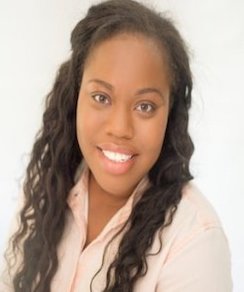This post is part of a new blog series called Transformative Change Initiative (TCI) Featured Evaluator, that includes interviews with members of TCI’s Evaluation Collaborative. This community of evaluators has a wealth of knowledge, experience and insights into evaluation of the TAACCCT grants that are being implementation throughout the United States. Want to be profiled or know someone who would make a great feature? Email us at occrl@illinois.edu.
Name: Tashera Bolds
Current position: Syracuse University STEM Fellow
Short bio: Ms. Bolds’ research interest is STEM education within the context of urban education settings. She is interested in understanding characteristics of STEM instructional environments, both formal and informal in nature, and how they contribute to the experiences of youth participating in those spaces. She has engaged in various STEM research projects relating to instructional design, instructional learning environments, identity cultivation, career pathways, and culturally relevant pedagogy. Recently, Ms. Bolds led her research team’s investigation and documentation of the instructional practices engaged by middle school teachers implementing a STEM initiative. She has also worked with the Museum of Science and Technology (MOST) in Syracuse, NY to understand how informal learning environments can help to stimulate interest and participation of urban youth participating in those spaces. As a Research Assistant at Hezel Associates, Ms. Bolds contributed to research efforts by performing data collection and analysis activities.
Questions:
Q. What is the design and predominant methods for your TAACCCT evaluation?
A. A mixed methods approach was employed to examine the complexity of our grantee’s context. We were able to draw from the strengths of each methodology, gaining a more comprehensive understanding of outcomes relating to implementation and impact. Toward the end of the grant period, we made additions to our techniques as we sought to understand the relationship among model components. A method that was particularly significant to this process was reviewing existing literature relevant to this subject. We were able to situate what was learned about model elements in this environment more broadly within the body of literature to include the greater community college and STEM workforce contexts.
Q. What advice do you have for new TAACCCT evaluators?
A. Communicate with other TAACCCT evaluators, both past and present. This is a unique community with a robust wealth of knowledge and experience. This community is by far your greatest resource! Furthermore, don’t be afraid to share your insights, too. I’ve learned that all perspectives are valued.
Q. What questions do you have for others about TAACCCT evaluation?
A. There is a lot to be gained through leveraging resources from past evaluations. Is there a place for research within the evaluation process? If so, when does this happen, in what ways, and by/for whom?
At times, we may identify gaps that if addressed could add value to an evaluation. To what extent have you gone beyond what was expected of or defined within the TAACCCT evaluation mandate, what drove that decision, and what was the subsequent implication, either locally or with respect to the larger community?
Tashera can be reached at tnbolds@syr.edu.




